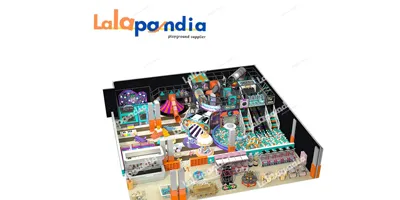2025.01.06
Posted By: Peter
Creating an indoor playground that fosters comfort, safety, and enjoyment for children requires thoughtful design, grounded in the principles of environmental psychology. These principles focus on how physical spaces affect children’s emotions, behavior, and overall well-being. In this article, we’ll explore key design concepts and answer some common questions on how to apply environmental psychology to indoor playgrounds.
Q&A on Designing a Child-Friendly Indoor Playground
Q1: Why is environmental psychology important when designing an indoor playground?
A1: Environmental psychology is crucial because it helps us understand how different elements in a space—such as colors, lighting, and layout—can influence children's emotions and behavior. By applying these principles, we can create a more enjoyable and supportive environment that promotes emotional well-being, creativity, and social interaction.
Q2: What role does safety play in playground design?
A2: Safety is the top priority in any playground design. Children need to feel secure while playing, so the space should minimize risks of injury. This includes using non-toxic materials, ensuring soft flooring to cushion falls, and designing barriers to prevent children from running into dangerous areas.
Design Tip: Soft, padded surfaces and clear, visible boundaries will help children feel comfortable and safe in their environment.
Q3: How do colors affect children's behavior in an indoor playground?
A3: Colors can significantly influence children's emotions and activity levels. Bright colors like red and yellow are energizing and stimulating, while cool colors like blue and green can have a calming effect. A mix of both types of colors can create a balanced environment, encouraging play and relaxation.
Design Tip: Use bright colors for play equipment to stimulate energy, while calming tones on walls or ceilings can create a relaxed atmosphere.
Q4: How does lighting impact the mood in a playground?
A4: Lighting plays a key role in creating a comfortable and inviting atmosphere. Natural light has been shown to improve mood and cognitive function, making it ideal for play areas. Artificial lighting should be soft and warm to avoid creating harsh shadows or discomfort.
Design Tip: Maximize natural light by including large windows or skylights, and use soft artificial lighting to enhance the overall atmosphere without overwhelming the children.

GET A QUOTE